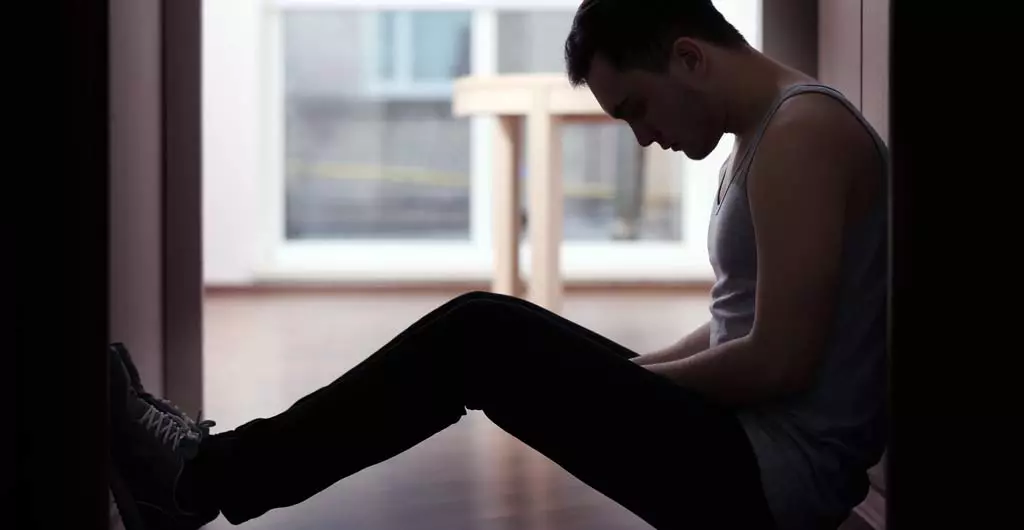Getting Help for Suicidal Thoughts
Table of Contents
Suicide attempts can be traced back to a person’s mental health and well-being. Depending on the treatment center, the approaches to ‘rehab for suicide’ and treating suicide attempts vary. Some places start with suicidal ideation treatment, while others opt for a more hands-on approach. These treatment methods depend on how the facility sees the role of mental health in overcoming your suicidal ideation.
If you or a loved one are seeking a suicidal ideation treatment center or just need to understand the root causes of what triggers these feelings, please keep reading to learn more about suicidal ideation treatment at Emerald Isle Health & Recovery.
Free Mental Health Assessment
What is mental health?
Mental health is more than just the absence of a diagnosable mental disorder. It refers to a level of emotional and psychological well-being that enables individuals to effectively function and meet the ordinary demands of everyday life. The term “mental hygiene” refers to an approach to promoting mental health through the prevention and treatment of mental illnesses.
In essence, mental health includes our emotional, psychological, and social well-being. It affects how we think, feel and act on a daily basis. Mental health is important at every stage of life, from childhood and adolescence through adulthood until old age.
Statistics on Mental health disorders
The World Health Organization (WHO) estimated that over 70% of people with mental disorders do not receive treatment. Some studies indicate that only 25% of individuals with diagnosable mental disorders (or symptoms indicative of such) believe they need treatment. Partly due to this lack of recognition, many people with serious psychiatric problems are never diagnosed or treated appropriately.
Most countries have laws that require registration by health professionals in order to treat clients who are disabled by their conditions; however, these laws vary widely in their stringency and effectiveness. In many countries, there are legal and societal barriers to effectively treating mental disorders or addiction.
The 21st century has been marked by an increase in mental disorders across the globe. In the United States alone, one in five people will experience a mental health issue in their lifetime. That’s more than 40 million Americans who are living with anxiety, depression, or another condition.
Chemical Imbalances vs Trauma-based mental illness
The world of mental illnesses is incredibly complex. Many of the illnesses are related, and interconnected and, for the most part, it isn’t easy to draw hard and fast lines. However, broadly speaking, it can be divided into two categories: Chemistry and Trauma-based.
The brain is the organ in the body that controls all other organs. It is constantly active, processing information and releasing chemicals to create feelings, thoughts, and actions. The chemicals in our brains are responsible for sending signals to our bodies, controlling our thoughts and feelings, regulating our moods, and more. The chemicals that help us create memories also make us feel emotions such as happiness, sadness, anger, and fear.
When the chemicals within the brain are out of balance or not functioning correctly, this can lead to the development of a mental health disorder. Examples of disorders based on brain chemistry are schizophrenia, depressive disorders, and bipolar disorders.
Trauma-based mental health issues, on the other hand, refer to disorders that have developed as a result of some active force upon a person. This might be abuse or an active traumatic situation. Examples of this are Post-traumatic stress disorder, Anxiety disorders, and Acute Stress Disorder.
How can mental health disorders affect your life?
Mental health disorders do not discriminate. They affect all people regardless of age, gender, race, ethnicity, or socioeconomic status. Mental health problems are common; at any given time, one in five Americans suffers from some form of mental disorder.
Mental illnesses are treatable, but they can also have serious consequences if they’re not treated properly. If left untreated, a mental health condition can interfere with your ability to function on a daily basis. Below are some of the ways in which mental disorders can cause problems in the larger scope of your life.
Relationship issues
Depending on the specific illness, oftentimes, mental health issues can cause a strain on the bond between family members and loved ones. Even when one has a supportive environment, the truth is that your relationships can be tried by mental disorders – more so if it is undiagnosed and untreated.
Substance use
People dealing with mental issues that are undiagnosed (or even diagnosed but not properly treated) are often at risk of falling victim to a substance use disorder. The possibility of falling into substance use as a means of self-medicating for emotional difficulties and stress is very common. The vast majority of persons struggling with drug use often have a co-existing mental illness that contributed to the development of the substance use disorder.
Physical health
The idea that one can have a mental disorder and it doesn’t affect one’s physical health is little more than blind hope. High stress levels and adverse behaviors associated with mental state (poor diet, lack of exercise, elevated stress hormones) can result in a myriad of physical health problems. These can operate somewhat like a feedback loop of sorts in terms of the already existing condition, each compounding the other into escalating in terms of severity.
The warning signs of mental disorders
When it comes to mental disorders, knowing the symptoms that you may be struggling with it can be key to pre-emptive treatment from mental health professionals. Warning signs of mental disorder include:
- Changes in sleep, eating habits, and energy levels
- Lack of interest in activities that were once enjoyable
- Sadness and crying for no obvious reason for a period of two weeks or longer
- Changes in mood, such as feeling irritable and angry most of the time (this may be diagnosed as depression), or feeling extremely anxious (this may be diagnosed as an anxiety disorder)
- Severe changes in weight or appearance, such as unkempt appearance, sudden weight loss, or gain
- Trouble concentrating on tasks or remembering things
24 Hour Mental Health Hotline
Untreated mental illnesses – how they lead to escalation
Mental health conditions are highly treatable, but only about half of people with diagnosable mental health conditions receive treatment. A treatment center may suggest a practical treatment process for dealing with a particular illness. In almost all cases, the treatment process starts with a treatment plan. Unfortunately, entering a residential treatment center is the last thing on many clients’ minds.
The negative thoughts focusing on their own life lead them to suicidal ideations. Given the means, a patient may put themselves in immediate danger and trigger a medical emergency with an attempt.
Suicide is the 10th leading cause of death in the United States. Suicide attempts are often impulsive attempts at relief from emotional pain and suffering. If left untreated, suicidal thoughts can escalate into suicidal ideation which, if allowed to fester further can result in a successful suicide attempt with tragic consequences for the deceased, as well as the families and friends left behind.
The dangers of suicidal thoughts
Suicide is a complex issue that’s difficult to understand. But it’s important to recognize those suicidal thoughts can be a symptom of a mental illness or substance abuse problem. The person who is considering suicide may not be able to think rationally about the future because their thought processes are distorted by their illness or substance abuse issues.
Usually, suicidal thoughts are a sign of a mental illness that has gone untreated for an extended period of time and has now escalated. Suicidal thoughts are that first massive red flag. At this point, the person may not necessarily be “at risk” of committing suicide itself, but this is definitely a point to prioritize treatment.
The warning signs of a person at risk and struggling with suicidal ideation
Unfortunately, suicidal ideation can be easy to miss. Suicide doesn’t discriminate. It can affect anyone, regardless of race, class, creed, or social status. There are many existing risk factors that you may already be aware of. Among the more noticeable triggers for suicidal ideation are:
- Substance use disorders
- Mental illness (as mentioned above)
- Terminal illness or chronic pain
- Prolonged stressful life situations
- Dealing with childhood trauma as an adult
- Witnessing someone else’s attempts to commit suicide
- A family history of suicide attempts
These triggers by themselves lead to visible signs of suicidal ideation, among which are:
- Discussing death or wanting to die
- Giving away personal items
- Isolation and withdrawal from social connections
- Mentioning they don’t have a reason to live and that others may be better off without them
- Talking about feelings of uselessness, or having no way out of their problems
These signs are easy to spot when talking with someone who has suicidal thoughts. However, there are a few signs that are less obvious but can point to a person taking their ideation closer to practice. Among these are:
- Unusual changes in behavior, including mood swings or behavior at odds with their personality
- Physical pain, including digestive pain or excessive headaches
- Emotional distancing from people they were close to, or they opened up to
- Accessing lethal means, such as acquiring a gun or other objects that could be used for that purpose
- Changes in sleeping patterns, which might also be due to depression and anxiety.
These signs are not 100% indicative of suicidal ideation, but they can set the stage for a deeper discussion about a person’s mental state and whether they need to seek suicidal ideation treatment.
Rehab for Suicide: What are the treatment options available?
Suicidal ideation treatment allows someone with these kinds of thoughts to deal with them in a healthy way. Emerald Isle Health and Recovery is a suicidal ideation treatment center that understands the needs of individuals who have these thoughts. Mental health treatment centers for suicidal behaviors start with a psychological evaluation. From there, a treatment center can tailor its therapeutic process based on the medical evaluation of the patient. The types of ‘rehab for suicide’ treatments vary, depending on what an individual needs.
An inpatient or residential treatment center offers a patient the chance to be treated away from the triggers and stressors that affect their mental state. An inpatient program focuses on giving suicidal people tools to deal with their suicidal ideations. At an inpatient treatment center, a patient gets access to professional treatment for their suicidal ideation. In addition to individual therapy sessions, an inpatient treatment center might incorporate group therapy or family therapy sessions.
Partial Hospitalization and Intensive Outpatient Programs for Suicidal Thinking
Another type of residential treatment center is the intensive outpatient program, where a person struggling with suicidal ideation could seek treatment while still maintaining their everyday lives. Unlike traditional outpatient therapy, a patient may access a partial hospitalization program as treatment for suicidal ideation. Outpatient treatment may also include group therapy, but there is less complete supervision of the patient. If you opt for an intensive outpatient program, you can potentially maintain your job and your pastimes while seeking the help you need.
An outpatient or inpatient treatment center will also offer practical coping skills to treat suicidal ideation. Individual therapy can help clients gain these coping skills and practice them so they can use them in the real world.
Immediate Placement for Mental Health Treatment
Choose Suicidal Ideation Treatment for Lasting Relief
If you want to learn more about suicidal ideation you can always contact Emerald Isle Health & Recovery. We believe in an individualized treatment plan, which allows us to deal with a patient’s needs directly. Group sessions and individual sessions are both important to overcoming the issue of suicidal ideation. Our treatment types include both inpatient and outpatient options, giving clients flexibility with the treatment options they can access.
The recovery process doesn’t happen overnight. However, with a professionally crafted treatment plan from Emerald Isle & Recovery, you can take back your own life. Our tools can help you with relapse prevention, and give you support groups that you can attend even after you complete your stay here. If you or a family member are experiencing suicidal ideation, you should consider treatment at our welcoming facility. Our doors are always open. Contact us today to learn about the suicidal ideation treatment offered at Emerald Isle Health & Recovery. Let’s help you take back your own life.




